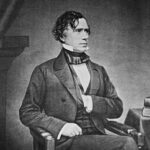The Decision
President Franklin Pierce negotiated the Reciprocity Treaty with Canada in 1854, eliminating tariffs on natural products. This groundbreaking agreement opened free trade between the United States and British North America. Pierce appointed skilled diplomat William Marcy to lead negotiations with British representatives. 📊 The treaty covered essential goods including grain, lumber, fish, coal, and livestock. Both nations recognized the mutual benefits of expanded commercial cooperation.
Economic Benefits
The Reciprocity Treaty with Canada created immediate economic advantages for American producers and consumers. 💰 New England fishermen gained access to profitable Canadian waters previously restricted. Midwest farmers found expanded markets for their grain and agricultural products. Canadian lumber flooded American markets, reducing construction costs significantly. The agreement eliminated bureaucratic barriers that had hindered cross-border commerce for decades.
Diplomatic Success
Pierce’s treaty represented a rare diplomatic victory during his troubled presidency. The agreement eased longstanding tensions between the United States and Britain. Commercial cooperation replaced trade disputes that had plagued North American relations since independence. This successful negotiation demonstrated Pierce’s administration could achieve meaningful international agreements despite domestic political challenges.
Impact:
Immediate Economic Growth
The Reciprocity Treaty with Canada produced dramatic increases in bilateral trade volume within its first year. 📊 Trade between the nations doubled from $15 million to $30 million by 1855. American exports of manufactured goods surged as Canadian markets opened. Canadian natural resources flowed freely into American industrial centers. New England ports experienced unprecedented growth handling increased Canadian commerce. The treaty created thousands of jobs in shipping, processing, and distribution industries.
Long-term Regional Development
Pierce’s trade agreement accelerated economic development throughout the Great Lakes region and Maritime provinces. 🌍 Railroad construction increased to handle growing commercial traffic between nations. Border communities transformed from isolated settlements into thriving commercial centers. The treaty encouraged American investment in Canadian industries and infrastructure projects. Tourism between the nations expanded as travel restrictions eased significantly.
Historical Significance
The Reciprocity Treaty with Canada remained Pierce’s most successful presidential achievement, lasting until 1866. 💰 Historians praise the agreement as a model for beneficial international trade cooperation. The treaty demonstrated how economic partnerships could resolve diplomatic tensions peacefully. It established precedents for future North American trade agreements including modern NAFTA provisions. Despite Pierce’s other failures, this treaty secured his legacy as an effective international negotiator.
